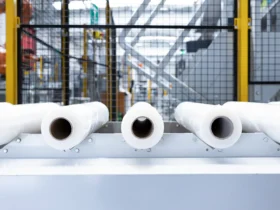Land development often requires the removal of trees and vegetation to prepare sites for construction, but this process doesn’t have to come at the expense of the environment. By adopting sustainable tree clearance practices, developers can balance the needs of their projects with the responsibility of preserving ecosystems. At RTT Services, we specialise in environmentally conscious tree clearance that supports both development goals and conservation efforts. In this article, we’ll explore how sustainable practices can make a difference and why they are essential for responsible development.
1. Conducting Environmental Assessments
Before any tree clearance begins, it’s vital to assess the environmental impact of the project. An ecological assessment identifies protected species, valuable habitats, and trees that may be subject to preservation orders. This ensures that clearance work is planned with a full understanding of the site’s ecological significance.
At RTT Services, we work closely with ecologists to ensure compliance with environmental regulations. By identifying sensitive areas and creating strategies to minimise impact, we help developers proceed responsibly, protecting wildlife and maintaining ecological balance.
2. Recycling and Repurposing Green Waste
Tree clearance generates significant amounts of green waste, but sending this material to landfill is neither sustainable nor cost-effective. Instead, professional tree clearance teams can recycle and repurpose waste to benefit the environment and local communities.
For example, branches and trunks can be chipped into mulch for use in gardens and landscaping, while larger pieces of wood can be repurposed for construction or crafting. These practices reduce landfill waste, lower carbon footprints, and ensure that materials are given a second life, aligning development with sustainability.
3. Replanting to Offset Tree Removal
Tree removal is sometimes unavoidable in development projects, but replanting offers a way to mitigate the impact. Planting new trees not only replaces lost vegetation but also supports carbon sequestration, biodiversity, and long-term environmental health.
RTT Services works with developers to recommend suitable tree species for replanting, taking into account the local climate, soil conditions, and ecosystem requirements. By incorporating replanting into site plans, developers can leave a positive environmental legacy while meeting planning and regulatory requirements.
4. Minimising Soil Disruption
Tree clearance can disturb soil, leading to erosion, reduced fertility, and long-term ecological damage. Sustainable practices focus on minimising soil disruption by using precise methods and advanced equipment. For instance, selective felling techniques and careful machinery placement help maintain soil stability and protect surrounding vegetation.
Preserving soil health is crucial for supporting remaining trees and vegetation on-site, as well as for the success of replanting efforts. By prioritising soil conservation, developers can enhance the sustainability of their projects and support future landscaping or agricultural use of the land.
5. Creating Wildlife Corridors
Tree clearance can disrupt habitats, but sustainable practices aim to mitigate this impact by maintaining or creating wildlife corridors. These corridors allow animals to move safely between habitats, preserving biodiversity even during construction.
Professional tree clearance teams like RTT Services identify opportunities to connect green spaces and support wildlife movement. For example, retaining hedgerows, planting native species, or leaving buffer zones around sensitive areas ensures that ecosystems remain functional and resilient despite site development.
6. Using Low-Impact Equipment
The machinery used in tree clearance can contribute to carbon emissions and environmental disturbance. Sustainable tree clearance prioritises the use of low-impact equipment, such as fuel-efficient or electric machinery, to reduce emissions and minimise disruption to the site.
At RTT Services, we invest in advanced equipment designed to perform efficiently while limiting environmental impact. This commitment to sustainability ensures that our operations align with best practices for eco-friendly development.
7. Compliance with Environmental Regulations
Responsible tree clearance requires adherence to strict environmental regulations. These include tree preservation orders (TPOs), wildlife protection laws, and guidelines for managing waste. Failing to comply with these regulations can result in fines, delays, and reputational damage for developers.
RTT Services ensures that all tree clearance work is carried out in compliance with relevant laws and standards. Our team conducts detailed assessments and provides documentation such as risk assessments and method statements, giving developers confidence that their projects meet legal and environmental requirements.
Conclusion
Sustainable tree clearance practices are essential for balancing development with conservation. By recycling green waste, replanting trees, minimising soil disruption, and supporting wildlife habitats, developers can achieve their project goals while protecting the environment. At RTT Services, we are committed to providing tree clearance solutions that prioritise sustainability, ensuring that development and conservation go hand in hand.
If you’re planning a development and need eco-friendly tree clearance services, contact professional tree services at RTT Services. Our experienced team is ready to help you prepare your site responsibly and efficiently, supporting both your project and the planet.







Leave a Reply